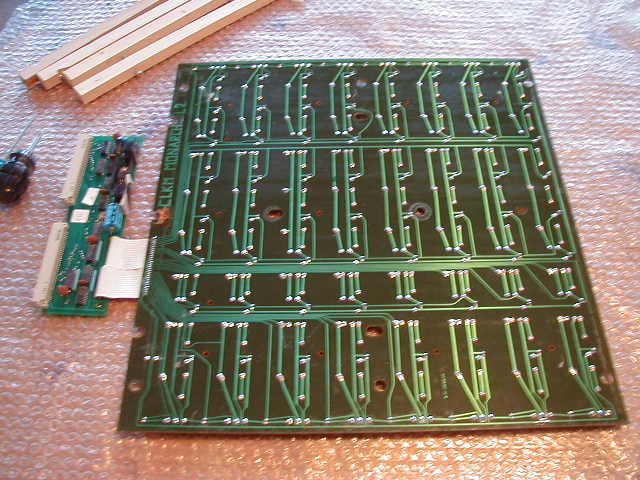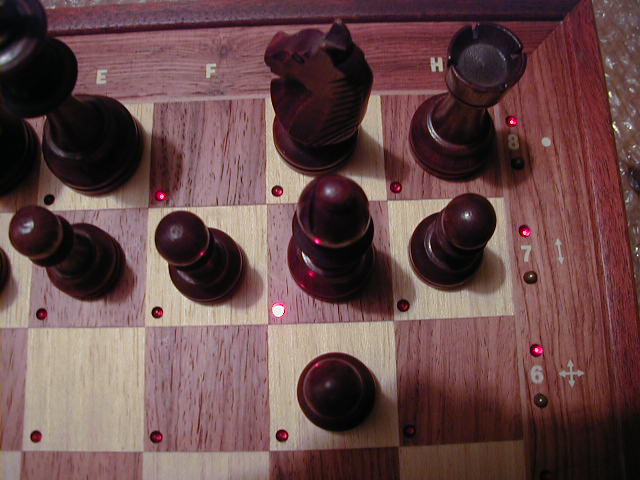|
(3) Control Buttons
Another achilles heel of the Conchess machines is the control buttons which run down either side of the board. As corrosion builds up they need a harder and longer press to get a reaction, until they stop working altogether.
The buttons push down on a switch which is made up of a small metal plate, or spring, which presses down onto a tiny metal post soldered into the PCB. In the photo the screwdriver tip is pointing at a post, and the spring I removed is lying next to it. The spring rebounds when the pressure is released.
The button can fail due to oxidation of the surfaces on the top of the post and underside of the spring. This problem can be solved by scraping the surfaces clean. However the posts are fragile and a better solution is to use contact spray, such as Maplin Contact Cleaner. This is a general purpose cleaning solvent which gets rid of the corrosion. Without unsoldering or removing anything just spray between the posts and the springs making sure that the spray gets to the contact surfaces.
|


